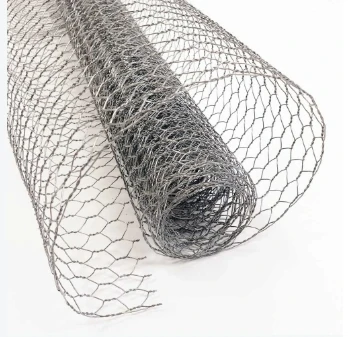-
 Phone:
Phone: -
 Email:
Email:

hexagonal wire mesh
Hexagonal Wire Mesh Versatile Applications and Benefits
Hexagonal wire mesh, also known as hex mesh or gabion mesh, is a type of woven wire material that features a hexagonal pattern. This unique design makes it highly versatile and suitable for a wide range of applications across various industries. Its popularity has surged due to its strength, durability, and cost-effectiveness. In this article, we will explore the various uses of hexagonal wire mesh, its advantages, and where it fits into modern construction and landscaping practices.
One of the most significant applications of hexagonal wire mesh is in construction and civil engineering. Often used for erosion control, hex mesh is commonly found in gabion walls, which are structures built from wire mesh filled with rocks or concrete. These walls not only provide excellent resistance to soil erosion but also add aesthetic value to landscapes. Engineers appreciate the flexibility of gabion structures, as they can be easily adapted to fit different terrains and environmental conditions.
In addition to erosion control, hexagonal wire mesh plays a crucial role in animal farming and agriculture. The mesh serves as a sturdy fencing solution, providing a secure enclosure for livestock, poultry, and other animals. Its hexagonal design minimizes the risk of entrapment, ensuring the safety of animals while also maintaining adequate airflow and visibility. Farmers often utilize this type of mesh for partitions in barns and coops, as well as for protection against predators.
The use of hexagonal wire mesh extends beyond agriculture; it also finds applications in landscaping
. Gardeners frequently use this material to create stunning decorative features, such as trellises, planters, and vertical gardens. By training plants to grow on the mesh, they can create lush, green walls that enhance the visual appeal of any outdoor space. The mesh also supports soil retention in planting beds, which is particularly beneficial in sloped settings.hexagonal wire mesh

Another essential area where hexagonal wire mesh is utilized is in industrial settings. Due to its structural integrity, it is often employed for security fencing around facilities, warehouses, and construction sites. The mesh can withstand significant pressure and deter unauthorized access, ensuring the safety of valuable assets. Additionally, its lightweight nature makes it easier to handle and install compared to heavier fencing options.
When it comes to advantages, hexagonal wire mesh offers several noteworthy benefits. Firstly, it has excellent tensile strength and flexibility, allowing it to withstand varying weather conditions without compromising its structural integrity. This feature is crucial in regions prone to flooding or heavy rainfall, where conventional fencing might fail. Secondly, the mesh is typically made from galvanized or stainless steel, which provides corrosion resistance and extends its lifespan significantly.
Moreover, hexagonal wire mesh is an environmentally friendly option. It is often made from recyclable materials, and its ability to facilitate natural vegetation growth makes it a sustainable choice for landscaping and erosion control. By promoting native plant growth, hex mesh structures can contribute to local ecosystems and enhance biodiversity.
In conclusion, hexagonal wire mesh is a multifaceted material with numerous applications spanning construction, agriculture, landscaping, and industrial sectors. Its unique hexagonal design, combined with its strength and durability, makes it a preferred choice for various projects. As sustainability becomes a priority for many industries, the use of hexagonal wire mesh will likely continue to grow, offering innovative solutions to modern challenges. Whether you're an engineer, farmer, or landscape designer, hexagonal wire mesh is a valuable resource that can enhance the functionality and aesthetic appeal of your projects.
-
Wire Mesh for Every Need: A Practical SolutionNewsJul.25,2025
-
Steel Fences: Durable, Secure, and Stylish OptionsNewsJul.25,2025
-
Roll Top Fencing: A Smart Solution for Safety and SecurityNewsJul.25,2025
-
Cattle Farm Fencing Solutions for Maximum SecurityNewsJul.25,2025
-
Affordable Iron Binding Wire SolutionsNewsJul.25,2025
-
Affordable Galvanized Wire SolutionsNewsJul.25,2025
-
Wire Hanger Recycling IdeasNewsJul.25,2025








